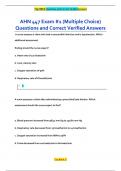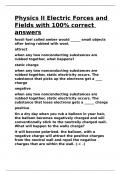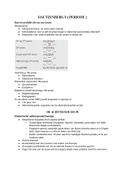Exam (elaborations)
MUS 307 Exam Questions And Answers |Latest 2025 | Guaranteed Pass.
- Course
- Institution
©FYNDLAY 2024/2025 ALL RIGHTS RESERVED 11:08AM. A+ 1 MUS 307 Exam Questions And Answers |Latest 2025 | Guaranteed Pass. Early Jazz features (3)/ instrumentation - Answer- collective improvisation in front line instruments - Instrumentation differs from many eras, front line of trumpet, clari...
[Show more]












